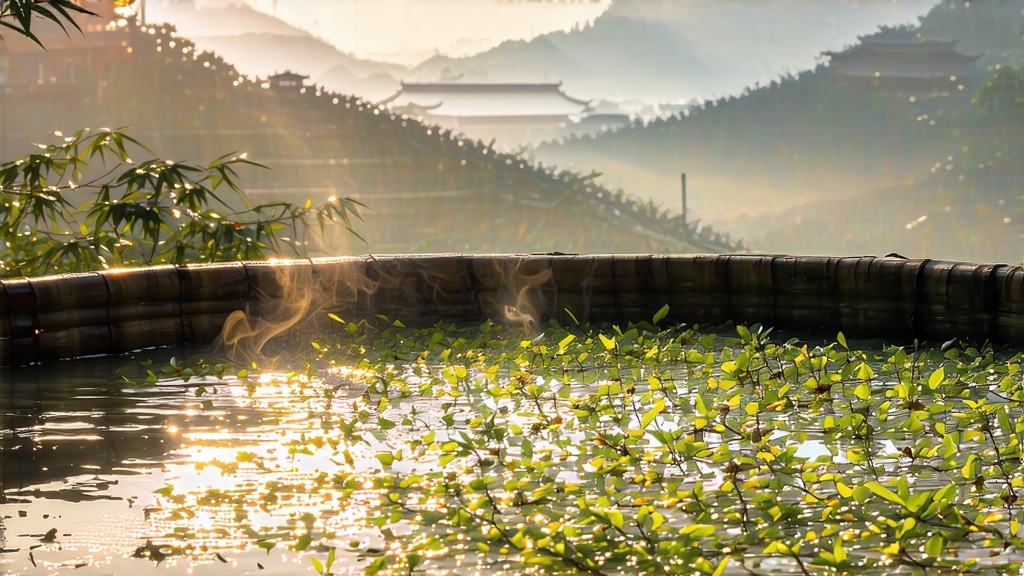
Meng Ding Huang Ya, literally “Yellow Bud of Meng Summit,” is the least-known yet most aristocratic member of China’s yellow-tea family. While green tea commands global fame and pu-erh fills investment portfolios, this luminous golden bud survives on a handful of terraced hectares clinging to 1 500-metre cliffs above the ancient town of Ya’an in Sichuan. Its story begins in the Tang dynasty (618-907) when the Meng mountain range was declared a “Sacred Land of Tea” by imperial edict. Caravans carrying compressed tea to Tibet left through Ya’an’s stone gates, but the tenderest buds were reserved for the emperor. A Tang court chronicle from 816 CE records “a tea of pale jade liquor, sweet as apricot kernel,” the earliest written reference to what would later be catalogued as Huang Ya. During the Song period the buds were steamed, pressed into dragon-phoenix cakes, and presented at the New-Year audience; by Ming times the loose-leaf “yellowing” technique had emerged, giving the tea its signature colour and mellow character. After 1949 the state re-organised the gardens, yet the cultivar—local Sichuan small-leaf—survived because monks at the Gan-Ding monastery secretly kept seed stock in their vegetable plots. Only since 2005 has genuine Meng Ding Huang Ya re-appeared in the world market, and annual production rarely exceeds three tonnes.
The tea belongs to the “bud-yellow” style, one of three recognised substyles of yellow tea. Unlike Hunan’s Junshan Yin Zhen, which is bud-yellow but lake-island grown, or Huo Shan Huang Da Cha, which uses larger late-season leaves, Meng Ding Huang Ya is picked between the Qingming and Grain Rain solar terms when each bud still wears its winter down. The standard is one bud plus one just-unfurling scale leaf, no longer than 2.5 cm, plucked before seven a.m. while mountain mist blocks direct sun. A skilled picker can gather barely 400 g in a day; 60 000 such shoots make one kilogram of finished tea.
Processing begins within minutes of plathora. The buds are spread on goat-hair mats in a draft-free pavilion for six hours of withering, losing about 8 % moisture while enzymatic aroma precursors intensify. Next comes the kill-green, but here the word “kill” is misleading: the aim is to pause oxidation, not annihilate it. Using a 120 °C wok the tea master tosses 250 g at a time for exactly 90 seconds; the leaf temperature must reach 85 °C at the core yet remain cool enough at the surface to avoid the nutty notes of roasted green tea. While still hot the buds are wrapped in thick linen bundles and placed in a bamboo steamer whose lid is sealed with damp cloth. This “sealed yellowing” (men huang) stage lasts 48 hours at 32 °C and 75 % humidity, during which residual heat and moisture re-activate non-enzymatic browning. Chlorophyll degrades into pheophytin, catechins dimerise into theaflavins, and a yellow pigment unique to yellow tea—mengdingic acid—appears. The leaf slowly turns ochre from the edge inward while retaining a green spine, the visual hallmark of authentic Huang Ya. After yellowing the buds are dried in three passes: charcoal basket firing at 70 °C for 30 minutes, cooling for 2 hours, then a final 60 °C bake until moisture drops to 5 %. The entire cycle takes four days, three times longer than green tea, explaining both its rarity and its price.
To brew Meng Ding Huang Ya Western readers should abandon the teaspoon-in-mug habit. Use a tall 150 ml glass or a gaiwan of porcelain so thin light passes through. Weigh 3 g of dry buds—about 40 shoots—and rinse them with 80 °C water for three seconds; this “awakening” wash is discarded. First infusion: 85 °C water, 30 seconds. The buds stand upright like miniature golden tulips before drifting down, a dance known as “the forest sinking.” Liquor colour is pale primrose with a brilliant green rim; aroma combines steamed maize, fresh lychee and a faint orchid note. Second infusion, 20 seconds: sweetness intensifies, acidity reminiscent of yellow plum